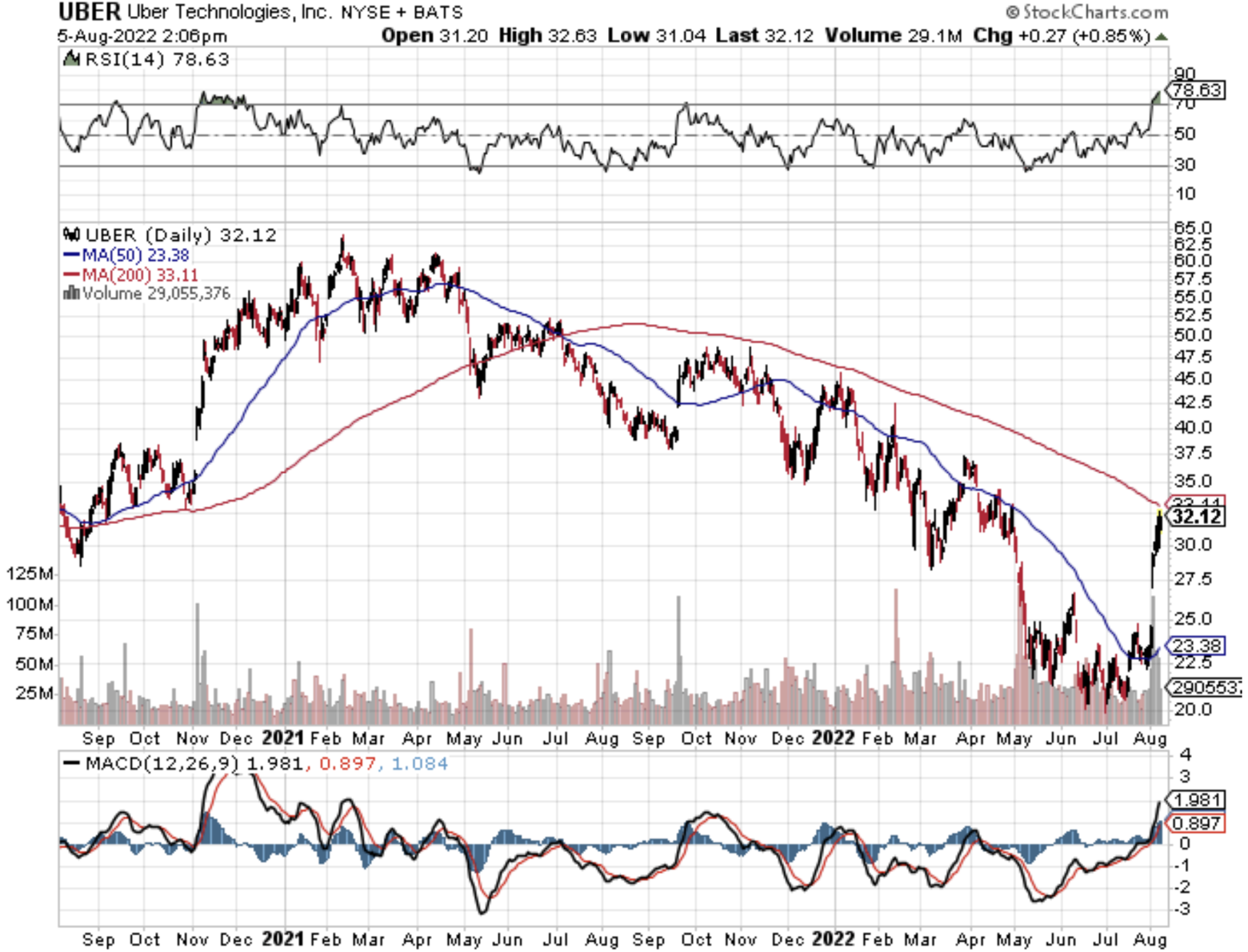I can’t say that I love the stock Uber, but the company would be good for a trade.
It’s a company with a poor business model that has essentially no way to ever become profitable.
At a time when profitability matters, the stock has been on the downtrend, but the recent reversal has brought Uber shares back to July 2020 levels.
Uber is caught in the middle of the inflation battle that the economy and society are fighting.
The company is a direct beneficiary of lower inflation and the consensus around the economy is that inflation has peaked because we are headed to a recession.
That doesn’t mean inflation is going back to 2% right away, but Uber’s investors will pile back into the stock if inflation trends around 5-7%.
The last time oil prices were under $90 per barrel was before the Ukraine conflict started.
Uber has two really big problematic businesses that they claim are successful.
One is the delivery business and the other is the ride-sharing one.
The ride share business did $3.55 billion in revenue last quarter compared to delivery’s $2.69 billion.
Uber’s freight segment delivered $1.83 billion in revenue for the quarter.
Uber recently announced new changes that may help it continue to attract and keep drivers. They’ll be able to choose the trips they want, for example, and will be able to see how much they’ll earn before they accept a trip.
The company reported 1.87 billion trips on the platform during the quarter, up 9% from last quarter and up 24% year over year.
Monthly active platform consumers reached 122 million, up 21% year over year. Drivers and couriers earned an aggregate $10.8 billion during the quarter, up 37% year over year.
Management said new driver sign-ups were up 76% year over year. They said over 70% of drivers said inflation and cost of living played a part in their decision to join Uber.
Adding more drivers combined with a newfound desire for revenge travel has offered a temporary solution to Uber’s business.
Paying drivers double and investing in the delivery business isn’t cheap, but management is hellbent on this strategy as their mandate as a growth company is to grow.
They don’t want to become another Netflix that's bereft of any modern ideas even if the unit economics don’t work at Uber.
Uber’s global users climbed to 93 million from 91 million in a quarter and it certainly helps to be a monopoly in the driver-sharing space.
If inflation has peaked and oil prices don’t suffer the same spikes we saw earlier this year, there is a high chance that Uber’s stock price will inch up.
Even better, the great job’s number this morning means that the economy will likely stave off a recession for the time being and at the very worst delay the start of it.
The 528,000 jobs added smashed the 25,000 estimates and oddly enough, the labor force participation fell to 62.1 meaning that people who already had a job, needed to find another job because inflation is so bad for the lower and middle class.
This certainly means that many of these people were pushed into Uber delivery and ridesharing jobs because those don’t come with fixed hours and are a nice way of supplementing income.
In broad terms, this is highly negative for the median American because if a worker is paid enough for one job, they would most likely forgo getting a second or third job.
In the short term, the stock has been screaming higher, and I would wait for a pullback as Uber has gone from $20 per share to $32 in the latest rally.




